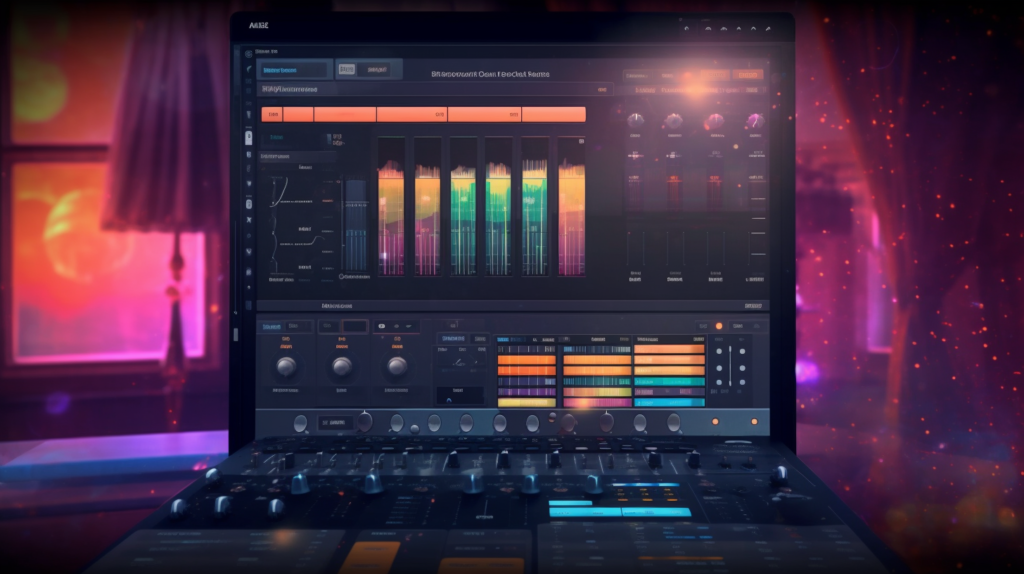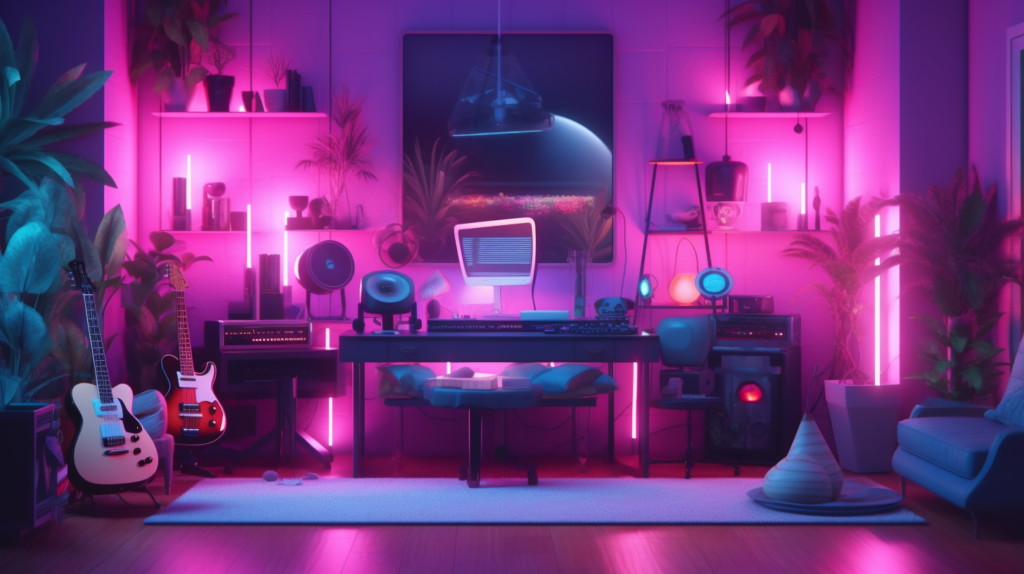
A Deep Dive into Sound Design Techniques
Sound design plays a crucial role in enhancing your music production skills. Mastering the art of sound design enables you to create unique, memorable, and expressive tracks that stand out from the competition. In this section, we’ll explore various techniques that will help you make the most of sound design in your music production.
Synthesis
Synthesis is the process of creating new sounds by manipulating and combining different sound waves. There are several types of synthesis, including subtractive, additive, wavetable, and granular synthesis. Each type offers distinct possibilities for shaping your sounds and achieving unique sonic textures.
Sampling
Sampling involves using pre-recorded audio clips as the basis for your sound design. You can manipulate these samples in various ways, such as pitch-shifting, time-stretching, and slicing, to create entirely new sounds. The key to effective sampling is selecting high-quality source material and applying creative processing techniques.
Audio Processing
Audio processing refers to the use of effects and signal processing tools to manipulate and enhance your sounds. Common audio processing techniques include EQ, compression, reverb, and delay. By applying these effects judiciously, you can create a more polished and professional-sounding mix.
Layering
Layering involves stacking multiple sounds together to create a single, cohesive sound. By combining different sounds with complementary characteristics, you can achieve richer, more complex tones that would be difficult to produce using a single source. Experiment with layering different types of sounds, such as synthesized tones, samples, and organic sounds, to create unique sonic textures.
Organic Sounds
Organic sounds are recordings of natural or acoustic sources, such as instruments, vocals, or field recordings. Incorporating organic sounds into your music production can add depth, realism, and a sense of space to your tracks. Be creative with your use of organic sounds – try blending them with synthesized or sampled elements for a truly unique sound design.
Modulation and Automation: Bringing Your Sounds to Life
Static sounds can quickly become boring and predictable. To keep your music interesting and dynamic, it’s essential to incorporate modulation and automation into your sound design. These techniques allow you to add movement, expression, and complexity to your tracks.
Modulation
Modulation is the process of varying a sound’s parameters over time, often by using a modulator source like an LFO, envelope, or MIDI controller. Common modulation targets include pitch, filter cutoff, amplitude, and pan. Experimenting with modulation can yield a wide range of expressive, evolving sounds.
Automation
Automation involves programming changes to your sound’s parameters over time, typically within your DAW’s timeline. This allows you to create intricate, evolving soundscapes that respond to the musical context of your track. Automation can be applied to virtually any parameter, including volume, pan, effects, and modulation depth.
Tips and Tricks for Creative Sound Design
Now that we’ve covered the basics of sound design techniques, let’s dive into some tips and tricks that will help you push your creativity to the next level.
Combine Synthesis Techniques
Don’t be afraid to mix and match different synthesis techniques to create entirely new sounds. For example, try blending wavetable synthesis with granular processing or layering a subtractive synth with an additive synth.
Use Unconventional Sources
Think outside the box when it comes to choosing sound sources for your music production. Explore unconventional sources like household objects, field recordings, or even your own voice. These unique sounds can add an unexpected twist and a distinctive character to your tracks.
Embrace Imperfection
Sometimes, the most interesting sounds are those with imperfections or “flaws.” Embrace these imperfections and use them to your advantage by creating textures and sonic landscapes that feel more organic and alive.
Experiment with Audio Effects
Push the boundaries of conventional audio processing by experimenting with unusual or unconventional effects. Try chaining multiple effects together, using parallel processing, or even designing your own custom effects with modular software.
Collaborate with Others
Collaborating with other producers and musicians can be an excellent way to expand your sound design horizons. Sharing ideas, techniques, and perspectives can lead to exciting new discoveries and creative breakthroughs.
Sound Design Cheatsheet for Producers
| Technique | Description | Tips |
|---|---|---|
| Synthesis | Create new sounds by manipulating and combining different sound waves. | Experiment with various types of synthesis, like subtractive, additive, wavetable, and granular. |
| Sampling | Use pre-recorded audio clips as the basis for your sound design. | Select high-quality source material and apply creative processing techniques. |
| Audio Processing | Manipulate and enhance your sounds using effects and signal processing tools. | Use EQ, compression, reverb, delay, and other effects to polish and refine your sounds. |
| Layering | Stack multiple sounds together to create a single, cohesive sound. | Combine synthesized tones, samples, and organic sounds for unique sonic textures. |
| Organic Sounds | Incorporate recordings of natural or acoustic sources into your music production. | Blend organic sounds with synthesized or sampled elements for a distinctive sound design. |
| Modulation | Vary a sound’s parameters over time using modulator sources like LFOs, envelopes, or MIDI controllers. | Target pitch, filter cutoff, amplitude, and pan for expressive, evolving sounds. |
| Automation | Program changes to your sound’s parameters over time within your DAW’s timeline. | Apply automation to volume, pan, effects, and modulation depth for intricate soundscapes. |
| Unconventional Sources | Explore unique sound sources, such as household objects, field recordings, or your own voice. | Use unconventional sources to add unexpected twists and distinctive character to your tracks. |
Sound design is an essential aspect of music production that can help you create unique, memorable, and expressive tracks. By mastering the techniques discussed in this guide, you’ll be well on your way to elevating your music to new heights. Remember to always experiment, collaborate, and push the boundaries of your creativity – the sky’s the limit!





